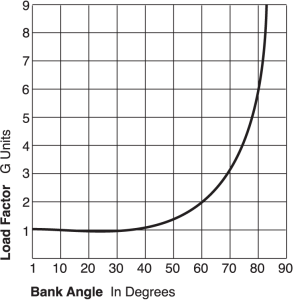This week we’ll introduce weight and balance. This post is excerpted from Bob Gardner’s textbook The Complete Private Pilot.
It would be nice to have an airplane in which we could fill all of the seats and all of the baggage area, fuel up to capacity, and take off safely without worrying about loading, but that is seldom (if ever) possible. The manufacturer dictates a maximum gross weight figure based on several factors including structural strength of the landing gear, power loading (weight per horsepower), wing loading (weight per square foot of wing area), strength of the wing structure, etc. Overloading an airplane can have serious consequences! See Figure 1—this pilot almost ran out of runway!
Airplanes are assigned to categories depending on the amount of weight the wing structure can sustain, and those categories dictate how the airplane can be used. The requirements are based on “Gs”—one G is 1 x the force of gravity (or the weight of the airplane). A normal category airplane can have a load of 3.8 Gs imposed on its wing, a utility category airplane is stressed for 4.4 Gs, and an airplane in the aerobatic category is designed to withstand a load of 6.0 Gs. Aerobatic airplanes usually have G meters installed to record how many Gs the airplane experienced during an aerobatic maneuver, (some sadder but wiser pilots have said that a G meter gives you information you really don’t want to know!). Many airplanes are certificated in both the normal and utility categories, but in the utility category are more limited in gross weight, in weight distribution, or in authorized maneuvers.
If you overload an airplane, the wing will have to be flown at a greater than normal angle of attack to develop enough lift to support the extra weight—this increases the stall speed, decreases the cruise speed, and limits the angle you can bank before reaching the critical angle of attack. Carrying more than the design maximum weight also means longer takeoff runs. If you combine overweight with a soft runway surface or a high density altitude, you are asking for trouble — it takes a lot of power to overcome the rolling resistance of overloaded tires.
Loads applied to the wing during maneuvering can overstress the airplane’s structure. Figure 2 shows the relationship between bank angle and load factor while maintaining attitude. You can see that for a normal category airplane 3.8 G will be reached at about a 75° bank angle, and for an airplane certificated in the utility category, a bank of about 77° will bring the load factor to 4.4 Gs. If the wing is designed for a wings-level load of 2,000 pounds and you load the airplane to 2,500 pounds, in a 60° bank you will be adding an additional 1,000 pounds to the load on the wing.
A one-time overload may not cause problems, but repeatedly overstressing components may cause them to fail many flight hours later, while performing normal maneuvers.
Check back on Thursday for a new CFI Brief!







